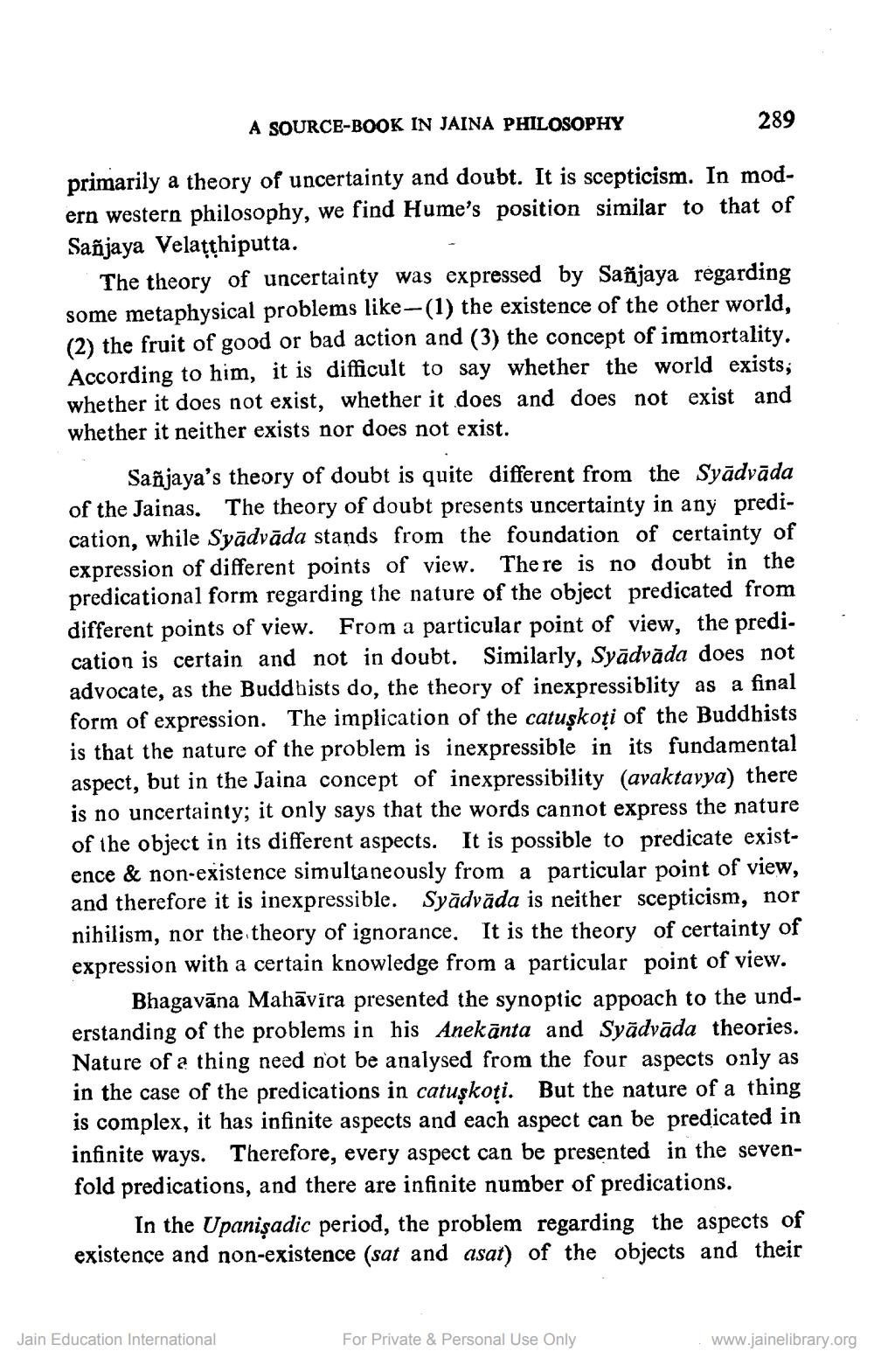________________
A SOURCE-BOOK IN JAINA PHILOSOPHY
289
primarily a theory of uncertainty and doubt. It is scepticism. In modern western philosophy, we find Hume's position similar to that of Sañjaya Velaţthiputta.
The theory of uncertainty was expressed by Sañjaya regarding some metaphysical problems like-(1) the existence of the other world, (2) the fruit of good or bad action and (3) the concept of immortality. According to him, it is difficult to say whether the world exists; whether it does not exist, whether it does and does not exist and whether it neither exists nor does not exist.
Sañjaya's theory of doubt is quite different from the Syādvāda of the Jainas. The theory of doubt presents uncertainty in any predication, while Syādvāda stands from the foundation of certainty of expression of different points of view. There is no doubt in the predicational form regarding the nature of the object predicated from different points of view. From a particular point of view, the predi. cation is certain and not in doubt. Similarly, Syādvāda does not advocate, as the Buddhists do, the theory of inexpressiblity as a final form of expression. The implication of the catuṣkoți of the Buddhists is that the nature of the problem is inexpressible in its fundamental aspect, but in the Jaina concept of inexpressibility (avaktavya) there is no uncertainty; it only says that the words cannot express the nature of the object in its different aspects. It is possible to predicate existence & non-existence simultaneously from a particular point of view, and therefore it is inexpressible. Syādvāda is neither scepticism, nor nihilism, nor the theory of ignorance. It is the theory of certainty of expression with a certain knowledge from a particular point of view.
Bhagavāna Mahāvīra presented the synoptic appoach to the understanding of the problems in his Anekānta and Syādvāda theories. Nature of a thing need not be analysed from the four aspects only as in the case of the predications in catuṣkoţi. But the nature of a thing is complex, it has infinite aspects and each aspect can be predicated in infinite ways. Therefore, every aspect can be presented in the sevenfold predications, and there are infinite number of predications.
In the Upanişadic period, the problem regarding the aspects of existence and non-existence (sat and asat) of the objects and their
Jain Education International
For Private & Personal Use Only
www.jainelibrary.org




